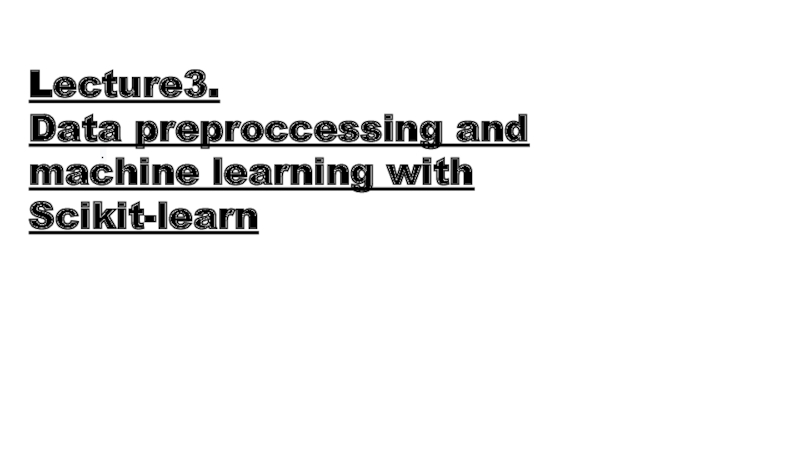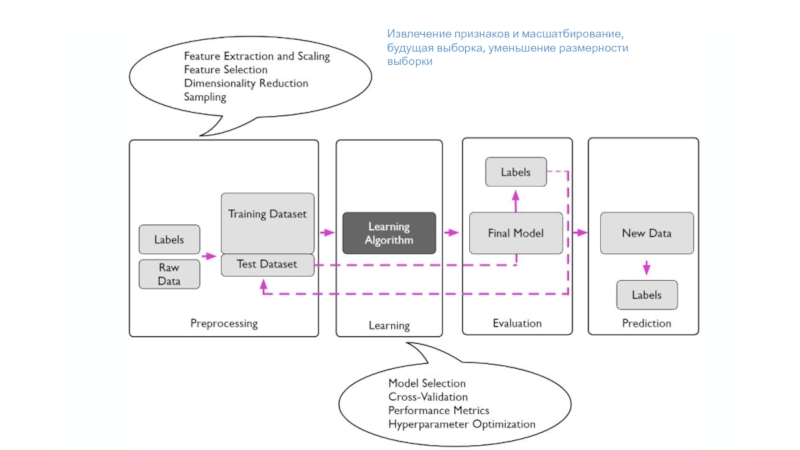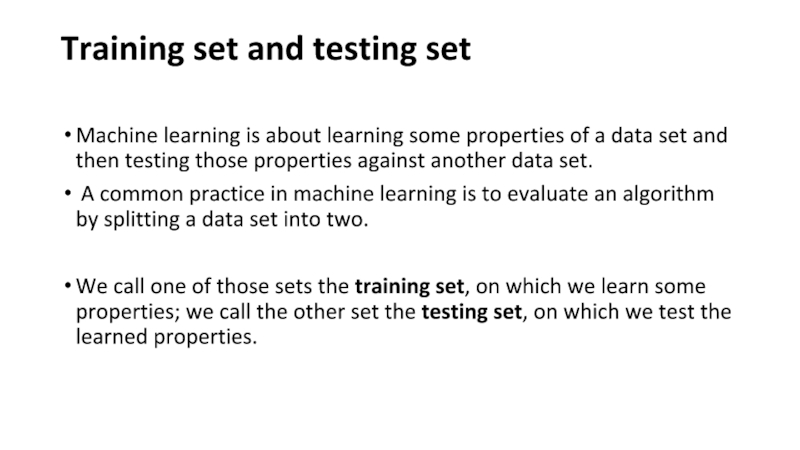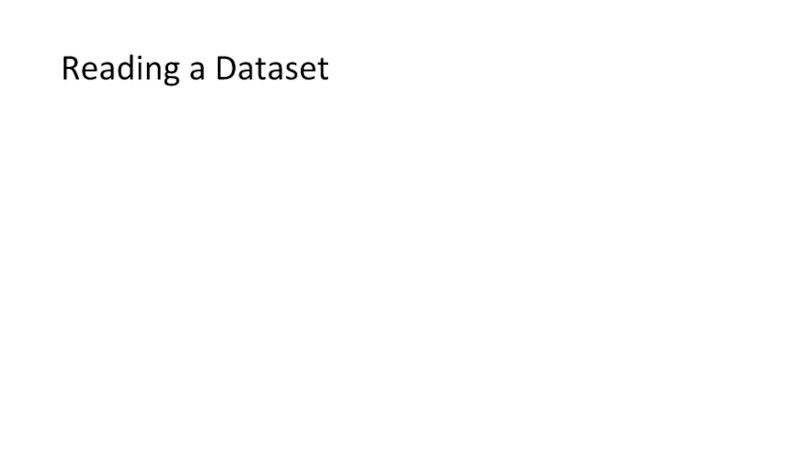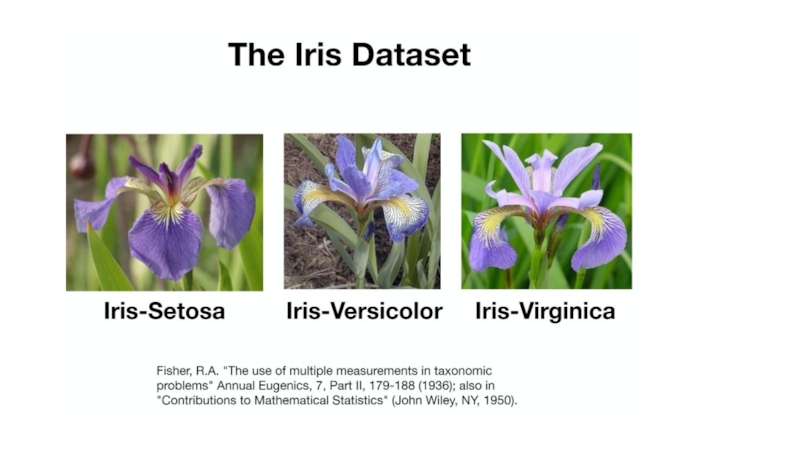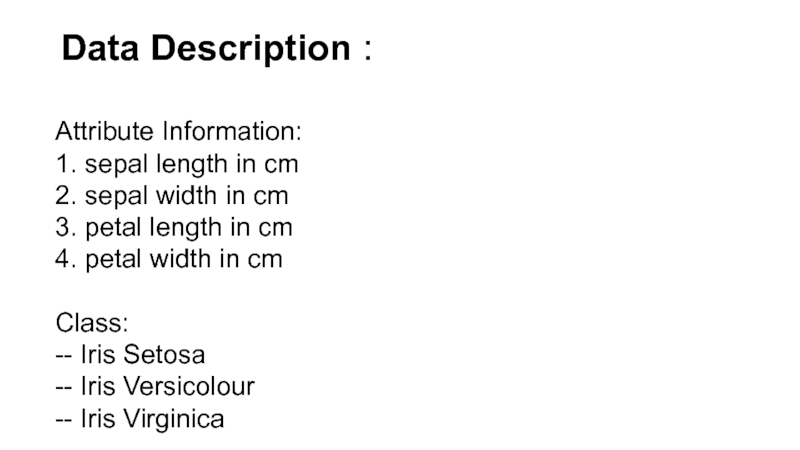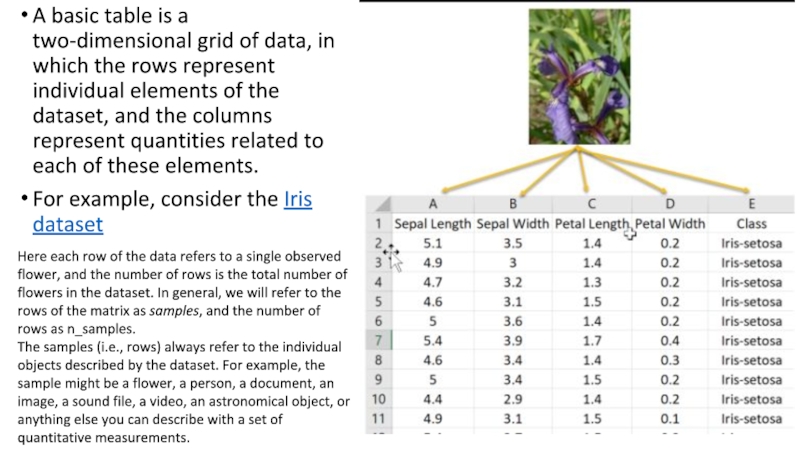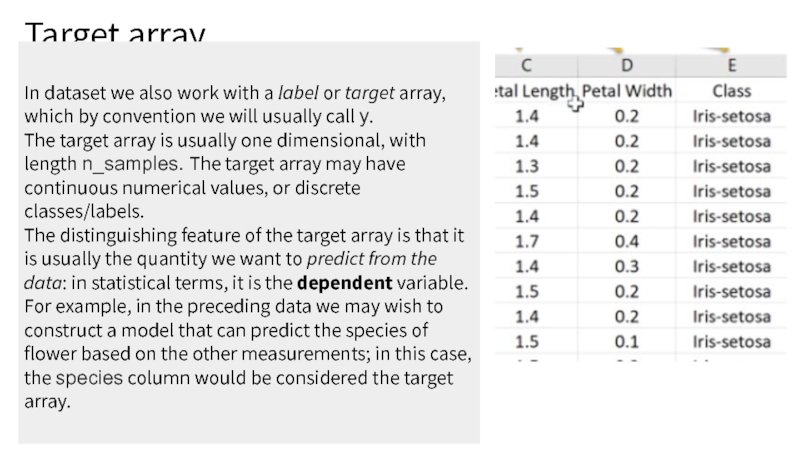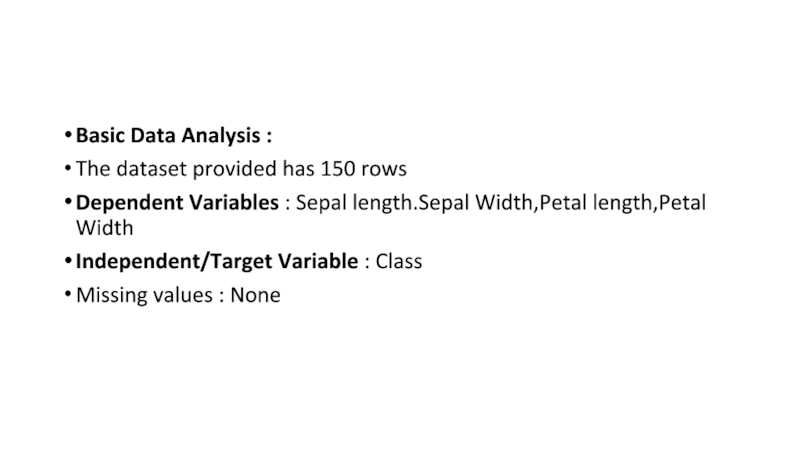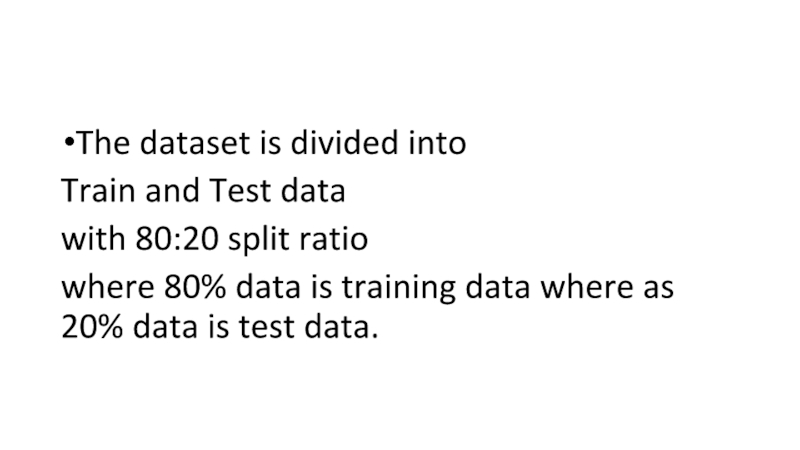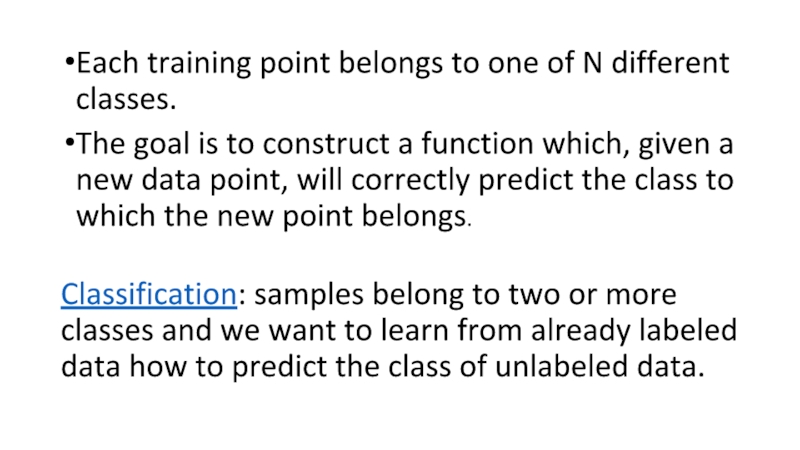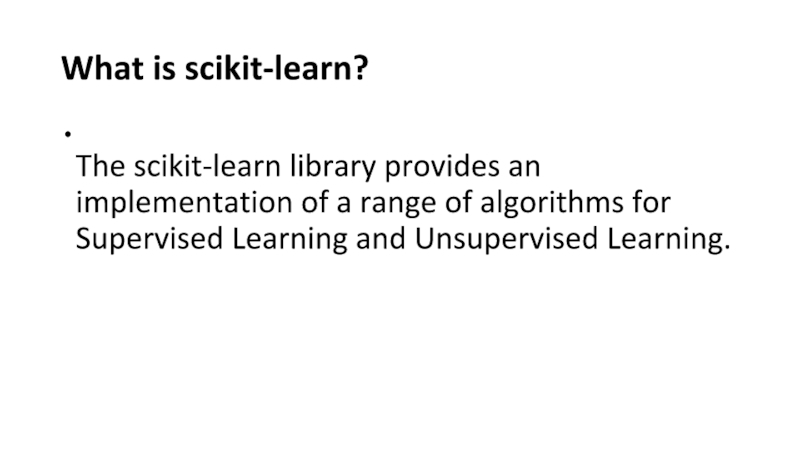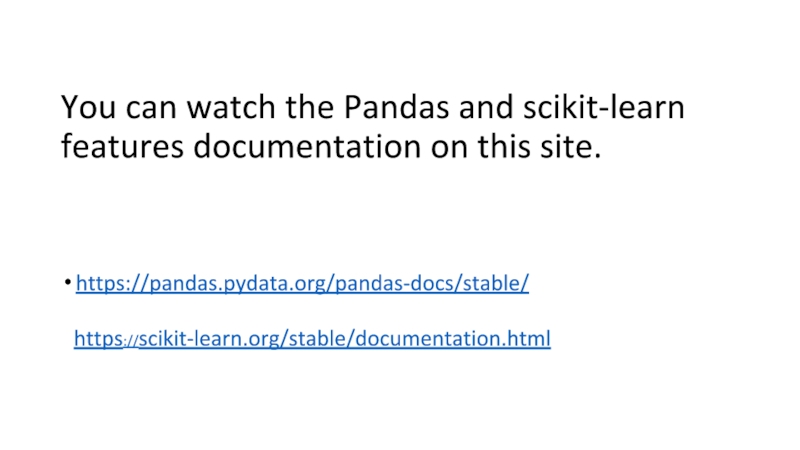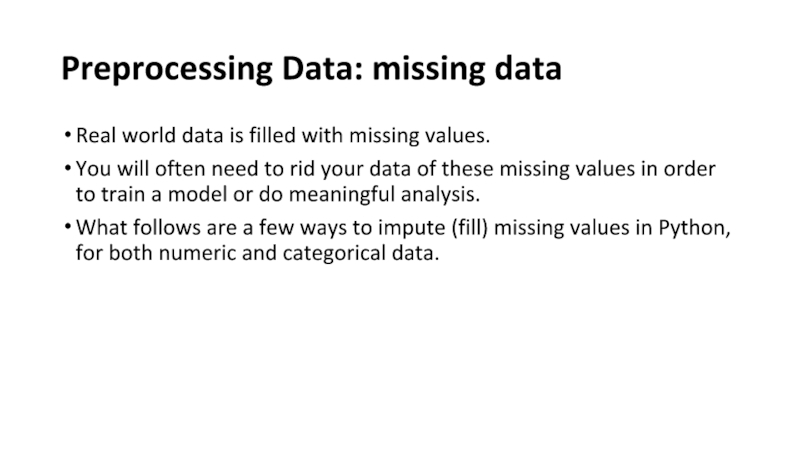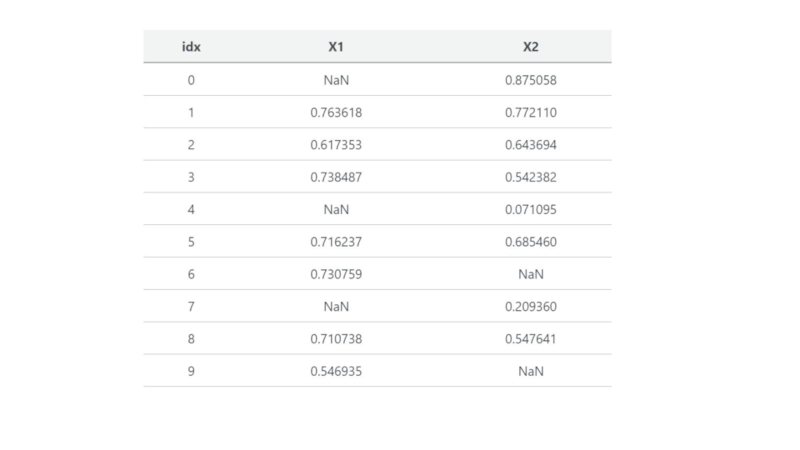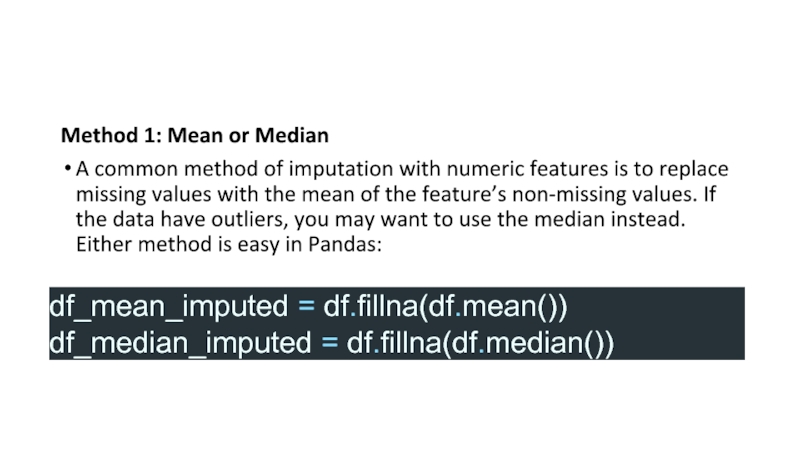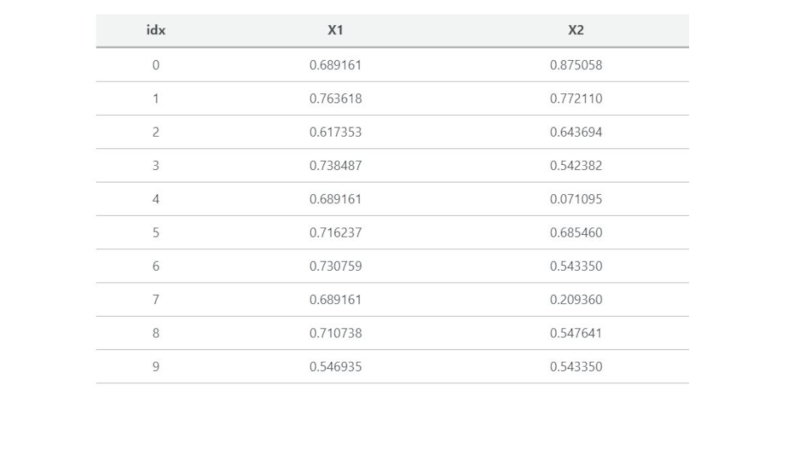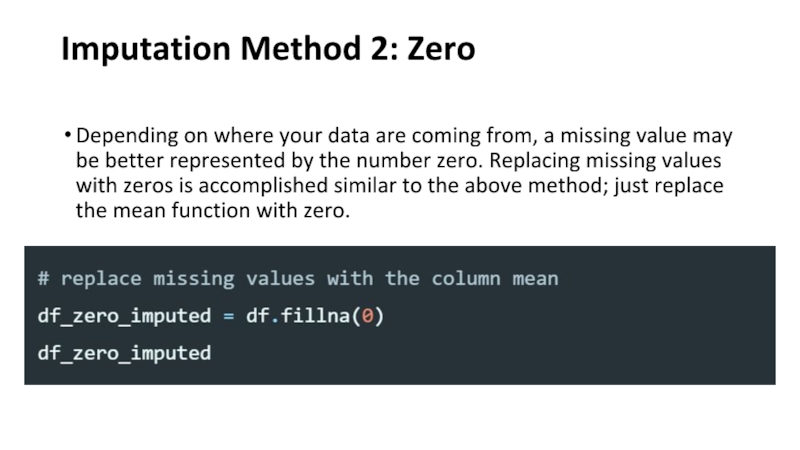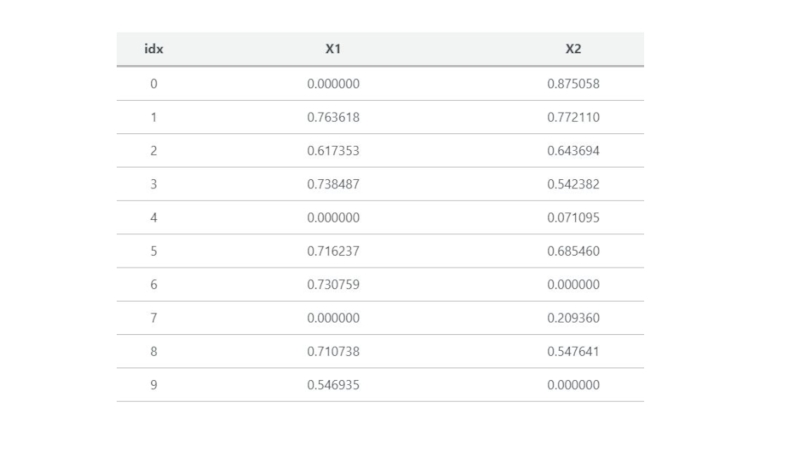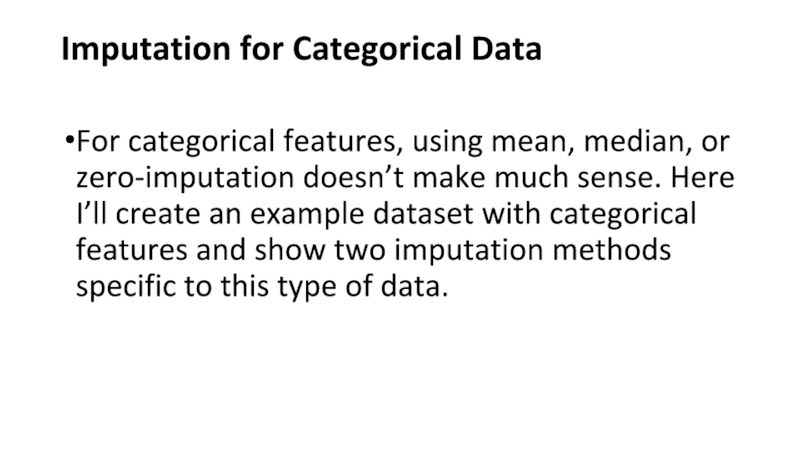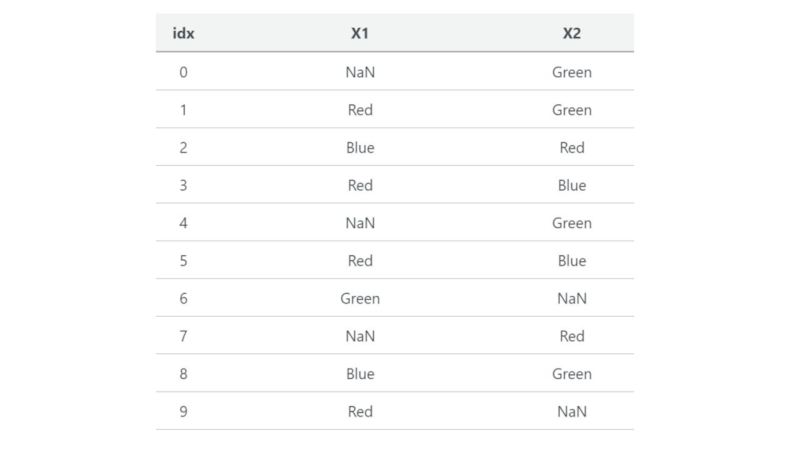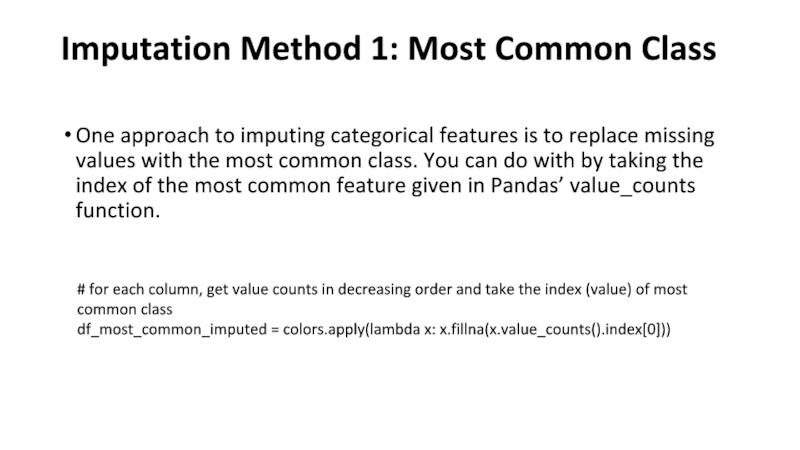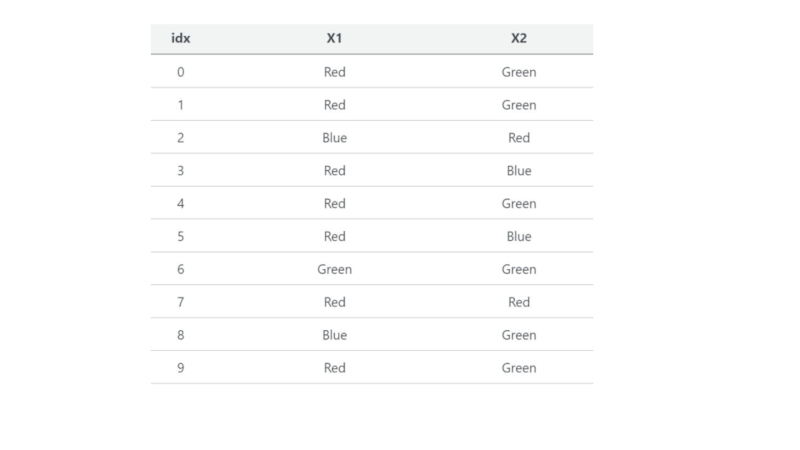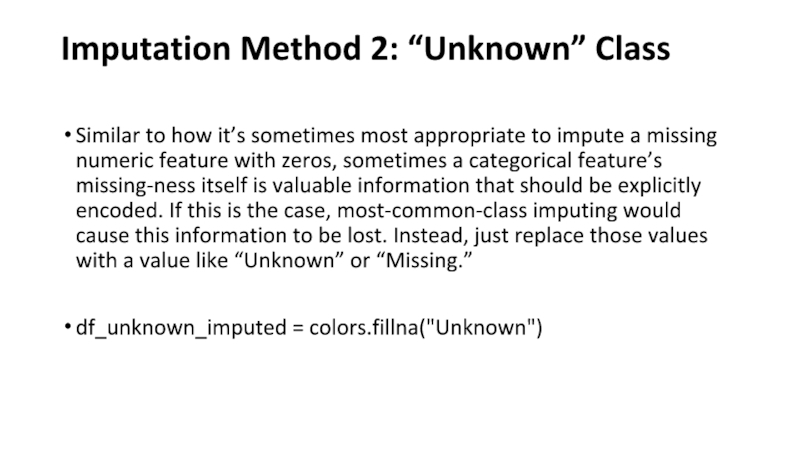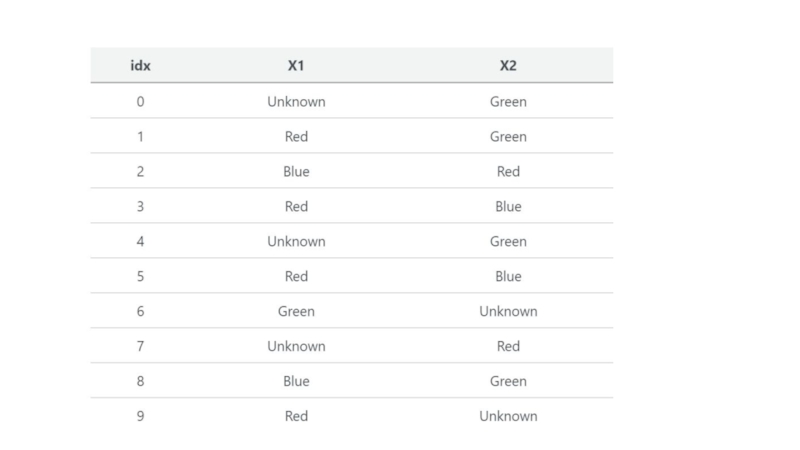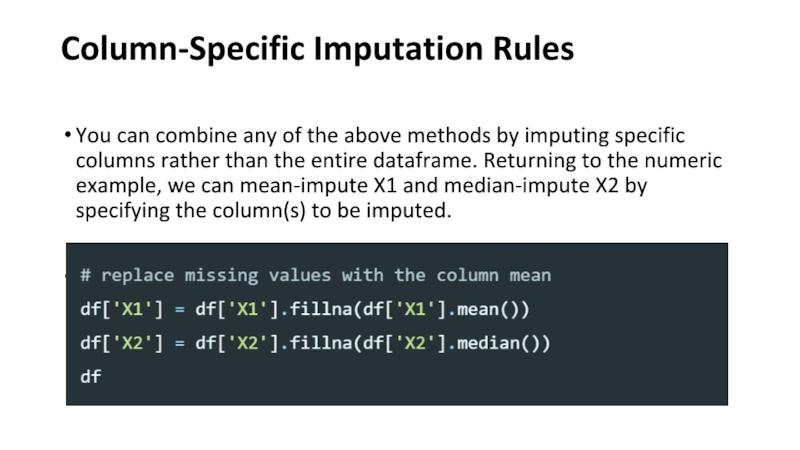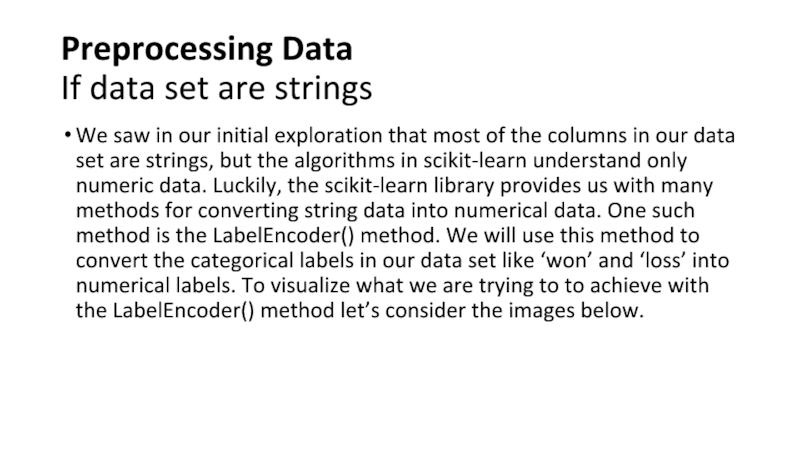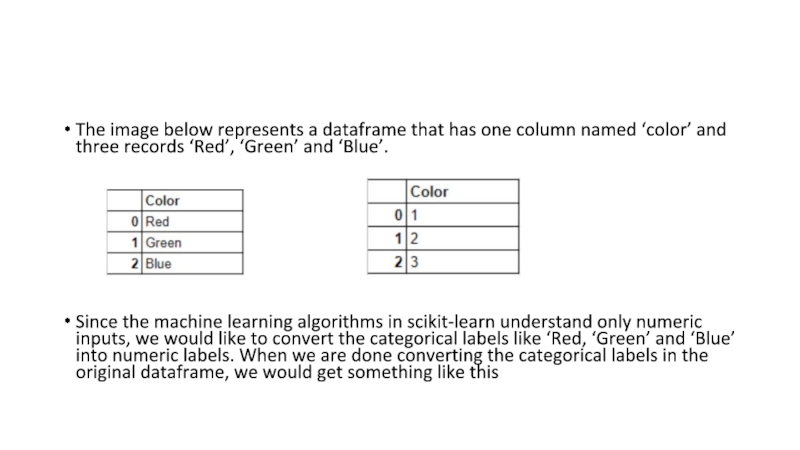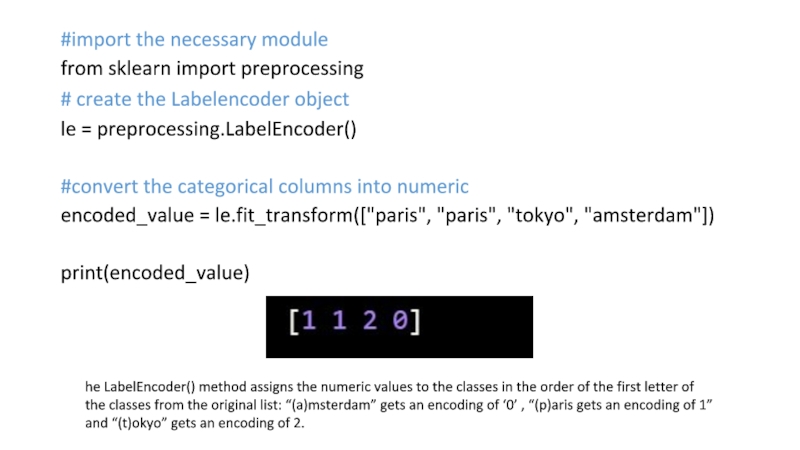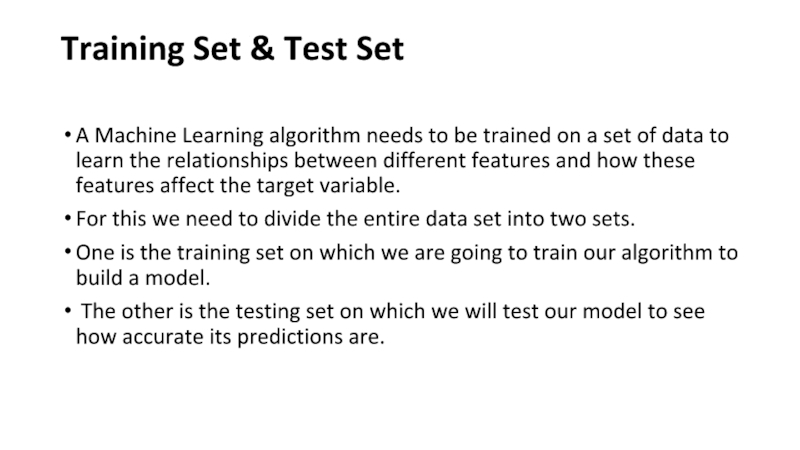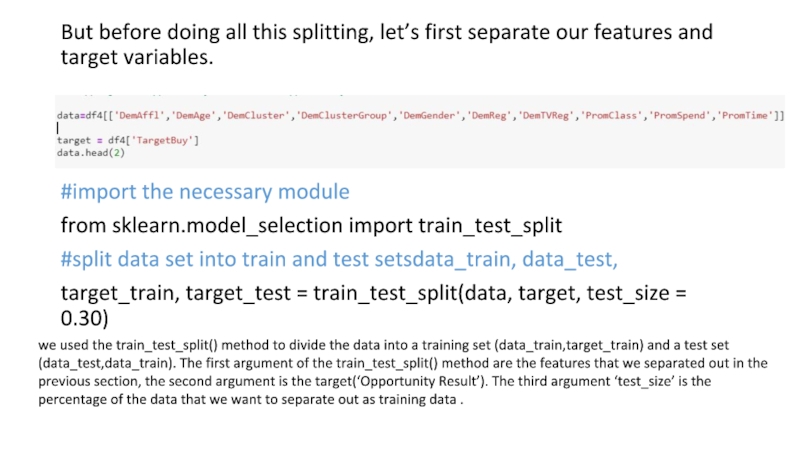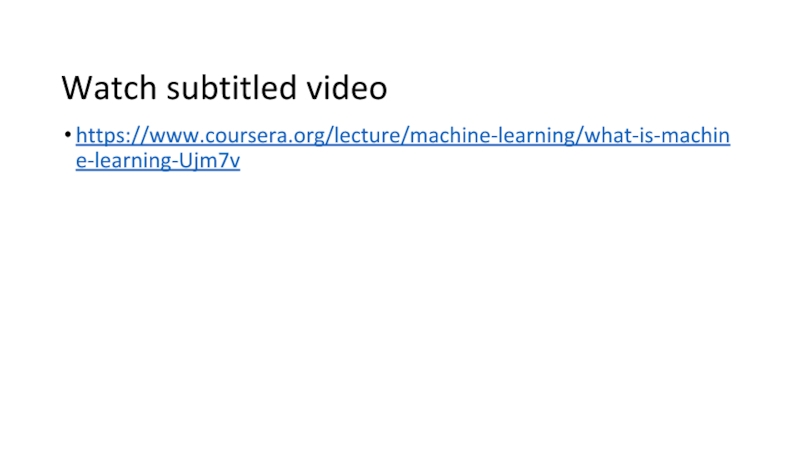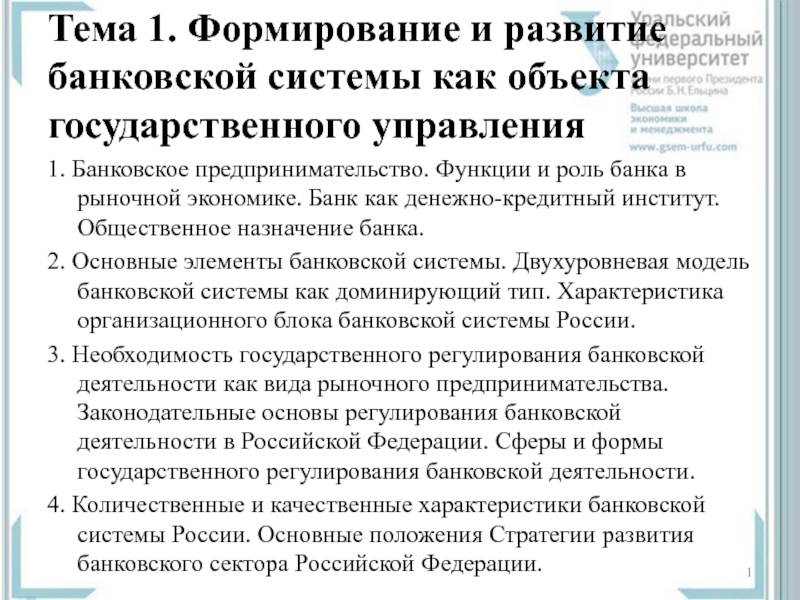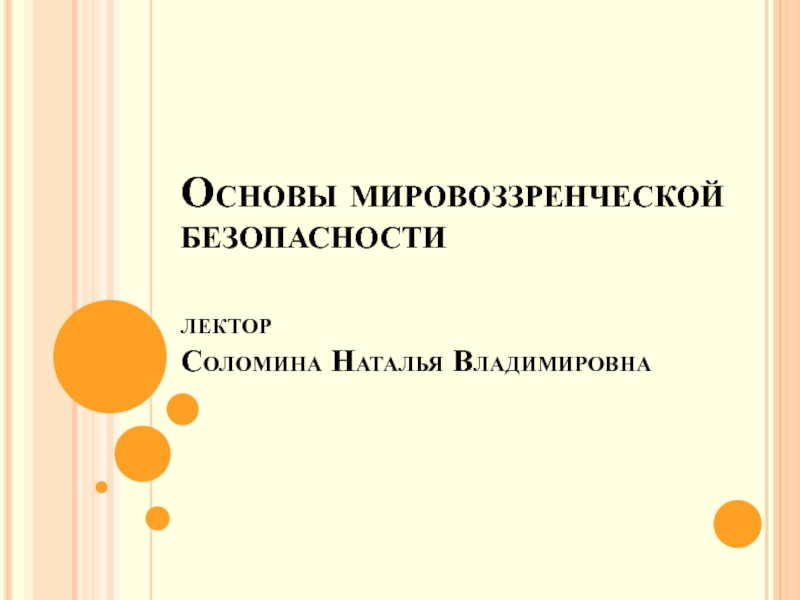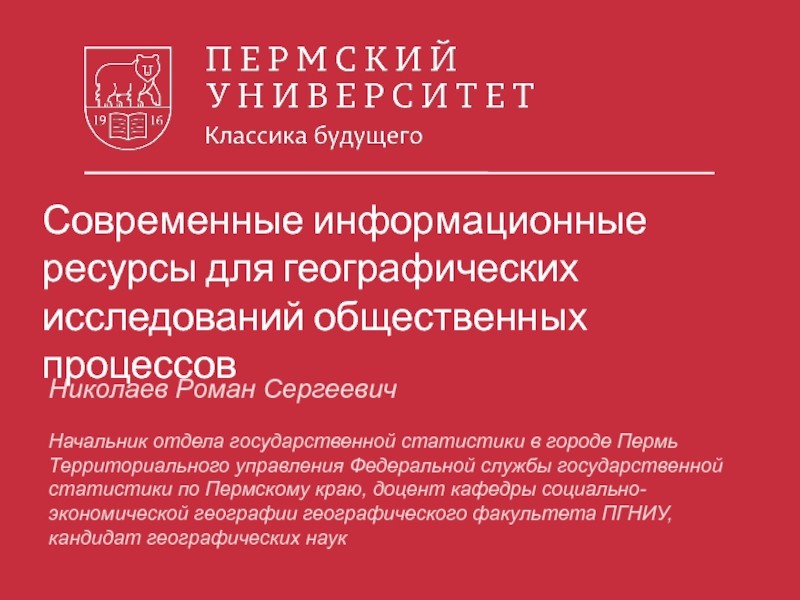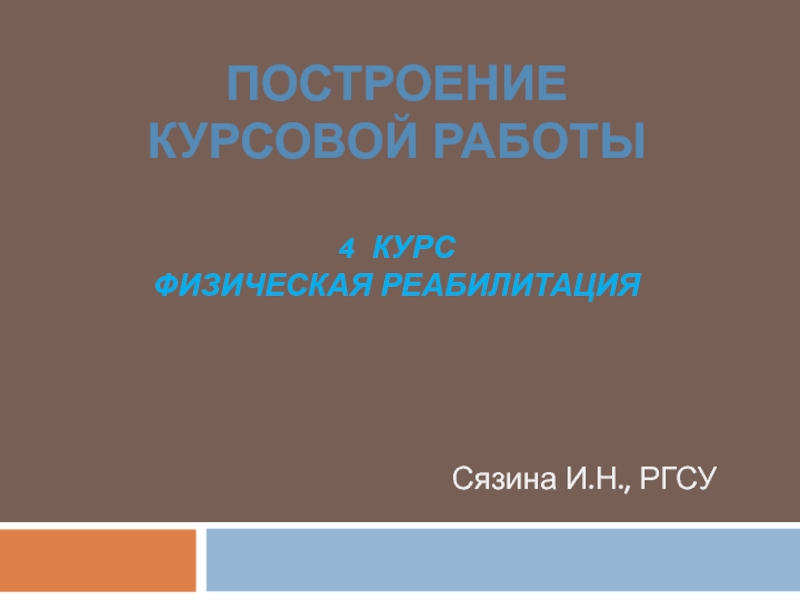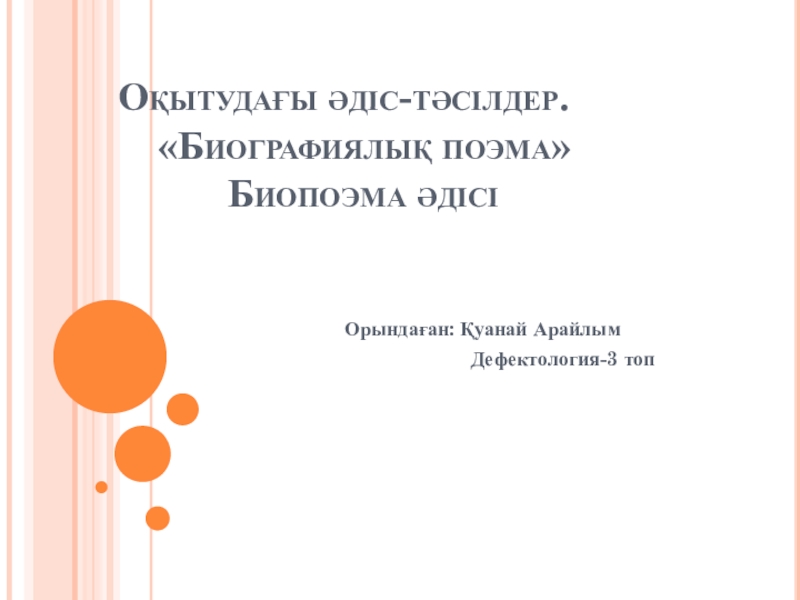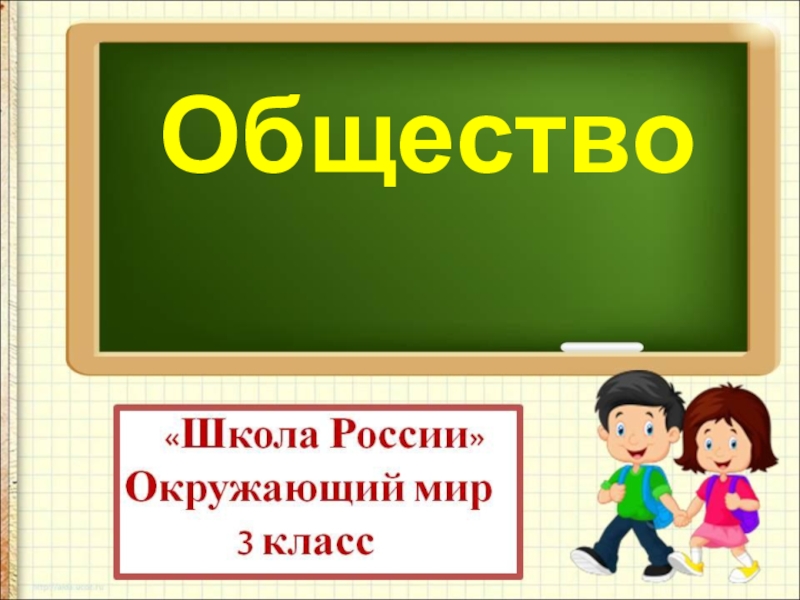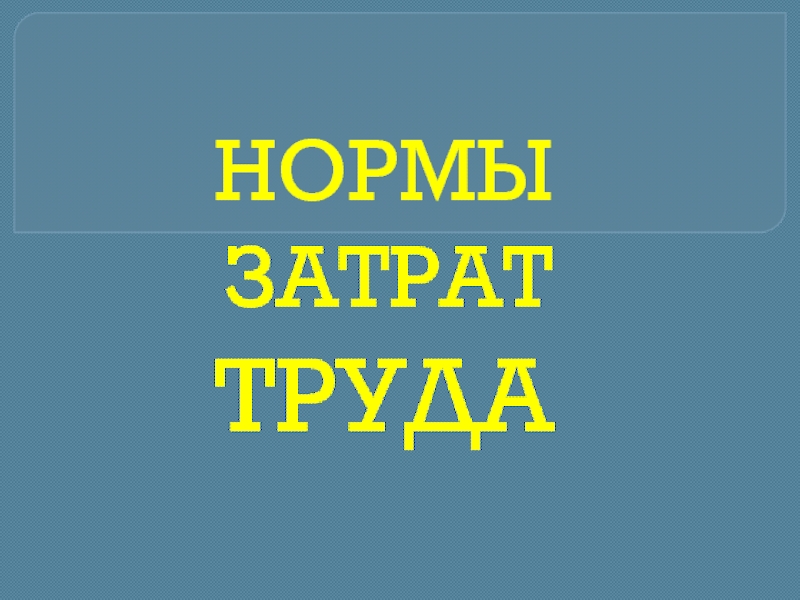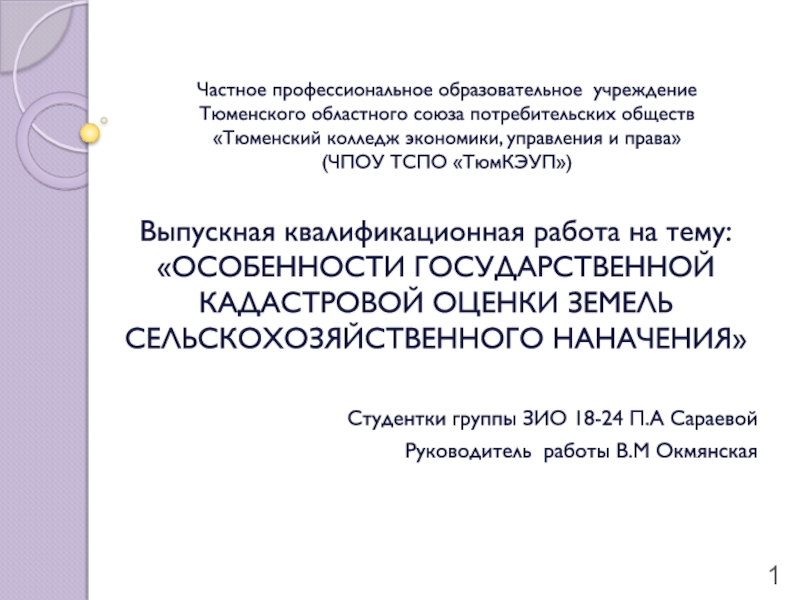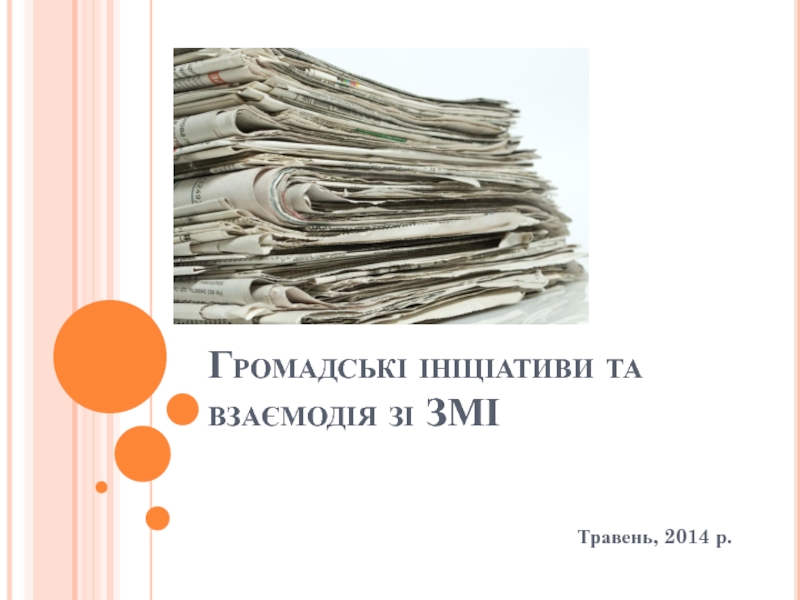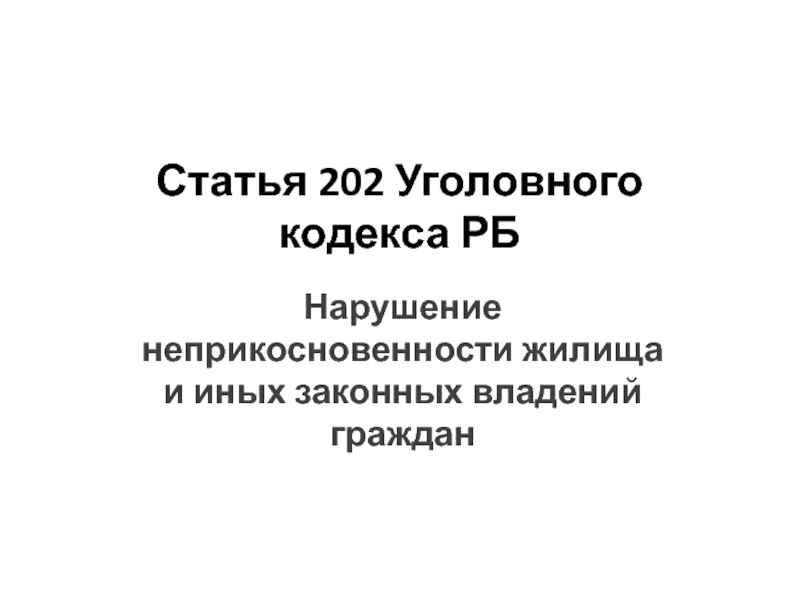Разделы презентаций
- Разное
- Английский язык
- Астрономия
- Алгебра
- Биология
- География
- Геометрия
- Детские презентации
- Информатика
- История
- Литература
- Математика
- Медицина
- Менеджмент
- Музыка
- МХК
- Немецкий язык
- ОБЖ
- Обществознание
- Окружающий мир
- Педагогика
- Русский язык
- Технология
- Физика
- Философия
- Химия
- Шаблоны, картинки для презентаций
- Экология
- Экономика
- Юриспруденция
Good morning ! Доброе утро! 早上 好 !
Содержание
- 1. Good morning ! Доброе утро! 早上 好 !
- 2. 我们会成功 We will succeed ! У
- 3. . Lecture3. Data preproccessing and machine learning with Scikit-learn
- 4. Извлечение признаков и масшатбирование, будущая выборка, уменьшение размерности выборки
- 5. Training set and testing set Machine learning
- 6. Reading a Dataset
- 7. Слайд 7
- 8. Data Description : Attribute Information: 1. sepal
- 9. A basic table is a two-dimensional grid
- 10. Target array In dataset we also work
- 11. Basic Data Analysis :The dataset provided has
- 12. The dataset is divided into Train and
- 13. Each training point belongs to one of
- 14. What is scikit-learn? The scikit-learn library provides
- 15. You can watch the Pandas and scikit-learn features documentation on this site.https://pandas.pydata.org/pandas-docs/stable/https://scikit-learn.org/stable/documentation.html
- 16. Preprocessing Data: missing dataReal world data is
- 17. Слайд 17
- 18. Method 1: Mean or MedianA common method
- 19. Слайд 19
- 20. Imputation Method 2: Zero Depending on where
- 21. Слайд 21
- 22. Imputation for Categorical Data For categorical features,
- 23. Слайд 23
- 24. Imputation Method 1: Most Common Class One
- 25. Слайд 25
- 26. Imputation Method 2: “Unknown” Class Similar to
- 27. Слайд 27
- 28. Column-Specific Imputation Rules You can combine any
- 29. Preprocessing Data If data set are stringsWe
- 30. The image below represents a dataframe that
- 31. #import the necessary modulefrom sklearn import preprocessing#
- 32. Training Set & Test Set A Machine
- 33. But before doing all this splitting, let’s
- 34. Watch subtitled videohttps://www.coursera.org/lecture/machine-learning/what-is-machine-learning-Ujm7v
- 35. Слайд 35
- 36. Слайд 36
- 37. CHECK
- 38. Скачать презентанцию
Слайды и текст этой презентации
Слайд 2我们会成功
We will succeed !
У нас все получится [U
nas vse poluchitsya ] !
Python for Machine learningСлайд 5Training set and testing set
Machine learning is about learning some
properties of a data set and then testing those properties
against another data set.A common practice in machine learning is to evaluate an algorithm by splitting a data set into two.
We call one of those sets the training set, on which we learn some properties; we call the other set the testing set, on which we test the learned properties.
Слайд 8Data Description :
Attribute Information:
1. sepal length in cm
2. sepal width
in cm
3. petal length in cm
4. petal width in cm
Class:
-- Iris Setosa
-- Iris Versicolour
-- Iris Virginica Слайд 9A basic table is a two-dimensional grid of data, in
which the rows represent individual elements of the dataset, and
the columns represent quantities related to each of these elements.For example, consider the Iris dataset
Here each row of the data refers to a single observed flower, and the number of rows is the total number of flowers in the dataset. In general, we will refer to the rows of the matrix as samples, and the number of rows as n_samples.
The samples (i.e., rows) always refer to the individual objects described by the dataset. For example, the sample might be a flower, a person, a document, an image, a sound file, a video, an astronomical object, or anything else you can describe with a set of quantitative measurements.
Слайд 10Target array
In dataset we also work with a label or target array, which by
convention we will usually call y.
The target array is usually
one dimensional, with length n_samples. The target array may have continuous numerical values, or discrete classes/labels. The distinguishing feature of the target array is that it is usually the quantity we want to predict from the data: in statistical terms, it is the dependent variable. For example, in the preceding data we may wish to construct a model that can predict the species of flower based on the other measurements; in this case, the species column would be considered the target array.
Слайд 11Basic Data Analysis :
The dataset provided has 150 rows
Dependent Variables
: Sepal length.Sepal Width,Petal length,Petal Width
Independent/Target Variable : Class
Missing values
: NoneСлайд 12The dataset is divided into
Train and Test data
with
80:20 split ratio
where 80% data is training data where
as 20% data is test data.Слайд 13Each training point belongs to one of N different classes.
The goal is to construct a function which, given a
new data point, will correctly predict the class to which the new point belongs.Classification: samples belong to two or more classes and we want to learn from already labeled data how to predict the class of unlabeled data.
Слайд 14What is scikit-learn?
The scikit-learn library provides an implementation of a
range of algorithms for Supervised Learning and Unsupervised Learning.
Слайд 15 You can watch the Pandas and scikit-learn features documentation on
this site.
https://pandas.pydata.org/pandas-docs/stable/
https://scikit-learn.org/stable/documentation.html
Слайд 16Preprocessing Data: missing data
Real world data is filled with missing
values.
You will often need to rid your data of
these missing values in order to train a model or do meaningful analysis. What follows are a few ways to impute (fill) missing values in Python, for both numeric and categorical data.
Слайд 18Method 1: Mean or Median
A common method of imputation with
numeric features is to replace missing values with the mean
of the feature’s non-missing values. If the data have outliers, you may want to use the median instead. Either method is easy in Pandas:df_mean_imputed = df.fillna(df.mean()) df_median_imputed = df.fillna(df.median())
Слайд 20Imputation Method 2: Zero
Depending on where your data are coming
from, a missing value may be better represented by the
number zero. Replacing missing values with zeros is accomplished similar to the above method; just replace the mean function with zero.Слайд 22Imputation for Categorical Data
For categorical features, using mean, median, or
zero-imputation doesn’t make much sense. Here I’ll create an example
dataset with categorical features and show two imputation methods specific to this type of data.Слайд 24Imputation Method 1: Most Common Class
One approach to imputing categorical
features is to replace missing values with the most common
class. You can do with by taking the index of the most common feature given in Pandas’ value_counts function.# for each column, get value counts in decreasing order and take the index (value) of most common class
df_most_common_imputed = colors.apply(lambda x: x.fillna(x.value_counts().index[0]))
Слайд 26Imputation Method 2: “Unknown” Class
Similar to how it’s sometimes most
appropriate to impute a missing numeric feature with zeros, sometimes
a categorical feature’s missing-ness itself is valuable information that should be explicitly encoded. If this is the case, most-common-class imputing would cause this information to be lost. Instead, just replace those values with a value like “Unknown” or “Missing.”df_unknown_imputed = colors.fillna("Unknown")
Слайд 28Column-Specific Imputation Rules
You can combine any of the above methods
by imputing specific columns rather than the entire dataframe. Returning
to the numeric example, we can mean-impute X1 and median-impute X2 by specifying the column(s) to be imputed.# replace missing values with the column mean
Слайд 29Preprocessing Data
If data set are strings
We saw in our initial
exploration that most of the columns in our data set
are strings, but the algorithms in scikit-learn understand only numeric data. Luckily, the scikit-learn library provides us with many methods for converting string data into numerical data. One such method is the LabelEncoder() method. We will use this method to convert the categorical labels in our data set like ‘won’ and ‘loss’ into numerical labels. To visualize what we are trying to to achieve with the LabelEncoder() method let’s consider the images below.Слайд 30The image below represents a dataframe that has one column
named ‘color’ and three records ‘Red’, ‘Green’ and ‘Blue’.
Since the
machine learning algorithms in scikit-learn understand only numeric inputs, we would like to convert the categorical labels like ‘Red, ‘Green’ and ‘Blue’ into numeric labels. When we are done converting the categorical labels in the original dataframe, we would get something like thisСлайд 31#import the necessary module
from sklearn import preprocessing
# create the Labelencoder
object
le = preprocessing.LabelEncoder()
#convert the categorical columns into numeric
encoded_value = le.fit_transform(["paris",
"paris", "tokyo", "amsterdam"])print(encoded_value)
he LabelEncoder() method assigns the numeric values to the classes in the order of the first letter of the classes from the original list: “(a)msterdam” gets an encoding of ‘0’ , “(p)aris gets an encoding of 1” and “(t)okyo” gets an encoding of 2.
Слайд 32Training Set & Test Set
A Machine Learning algorithm needs to
be trained on a set of data to learn the
relationships between different features and how these features affect the target variable.For this we need to divide the entire data set into two sets.
One is the training set on which we are going to train our algorithm to build a model.
The other is the testing set on which we will test our model to see how accurate its predictions are.
Слайд 33But before doing all this splitting, let’s first separate our
features and target variables.
#import the necessary module
from sklearn.model_selection import
train_test_split#split data set into train and test setsdata_train, data_test,
target_train, target_test = train_test_split(data, target, test_size = 0.30)
we used the train_test_split() method to divide the data into a training set (data_train,target_train) and a test set (data_test,data_train). The first argument of the train_test_split() method are the features that we separated out in the previous section, the second argument is the target(‘Opportunity Result’). The third argument ‘test_size’ is the percentage of the data that we want to separate out as training data .
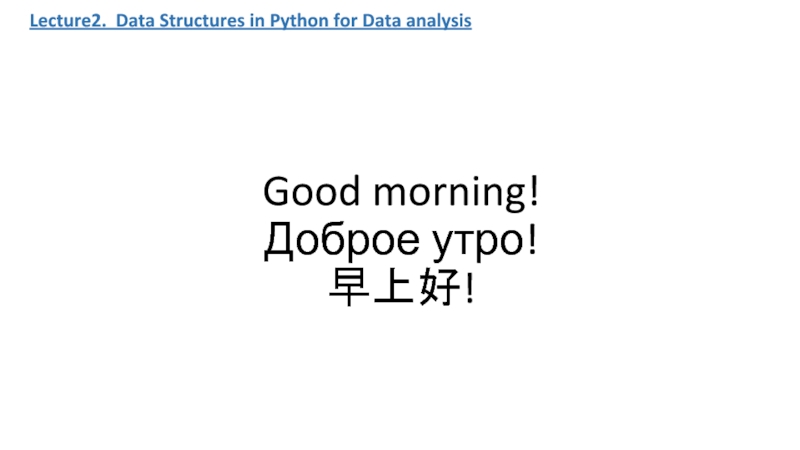
![Good morning ! Доброе утро! 早上 好 ! 我们会成功 We will succeed ! У нас все получится [U nas 我们会成功 We will succeed ! У нас все получится [U nas vse poluchitsya ] !Без булдырабыз!](/img/thumbs/b1f79acef4eaeed344eaf0e5839ef858-800x.jpg)
